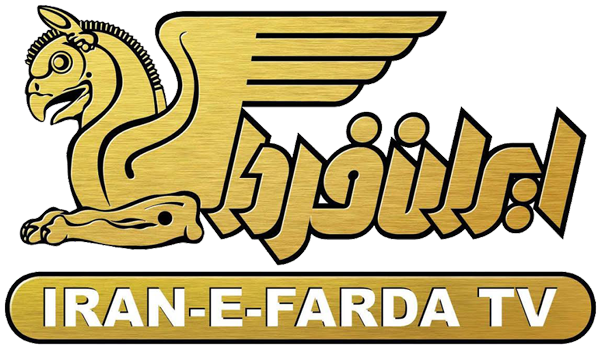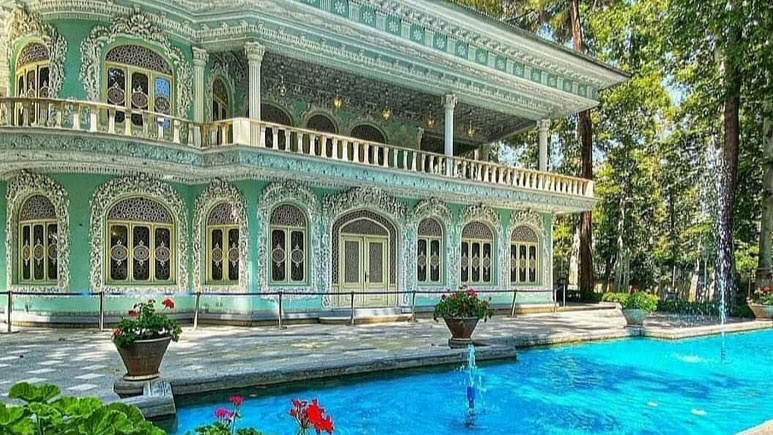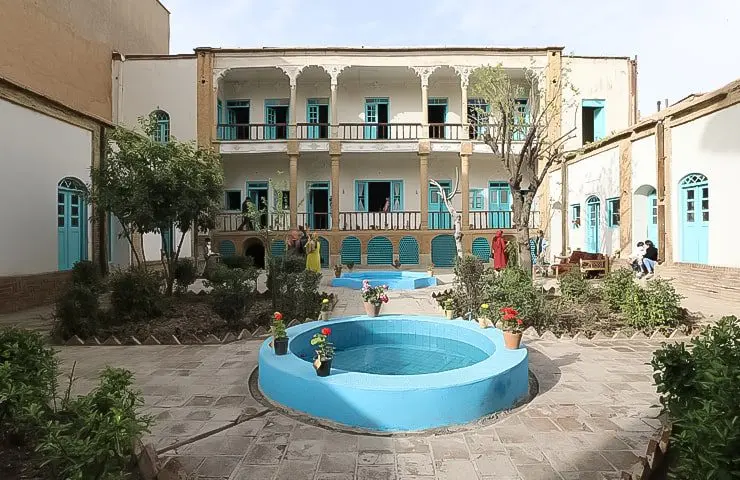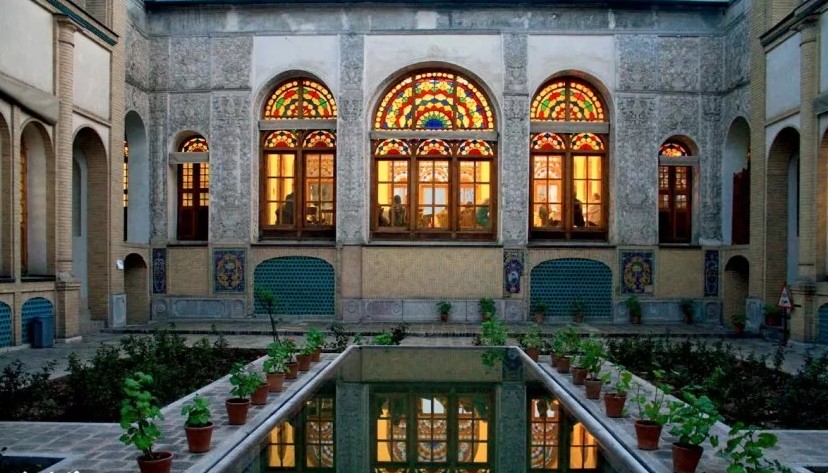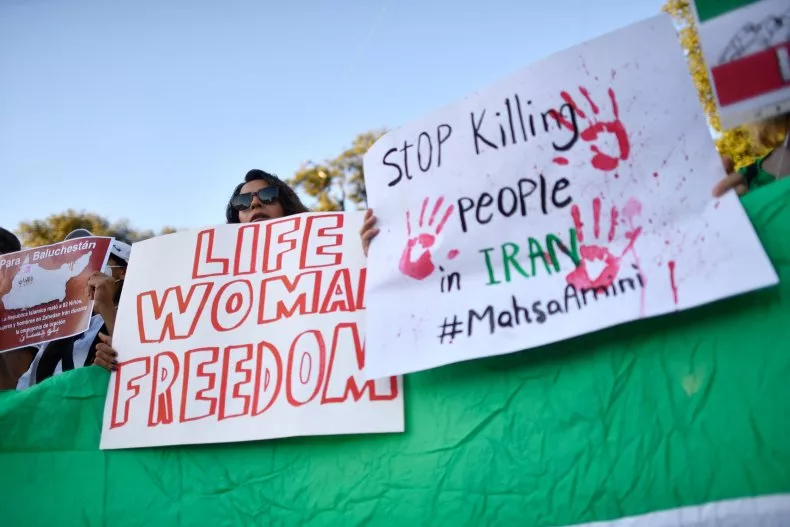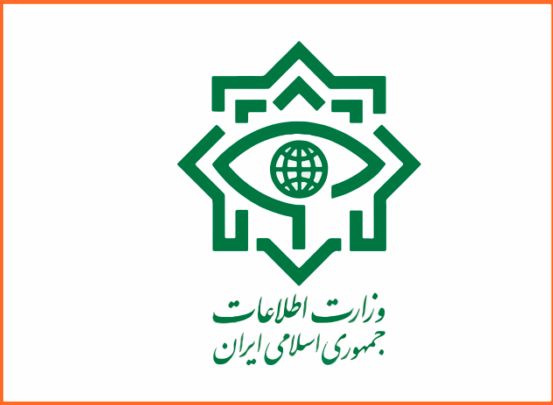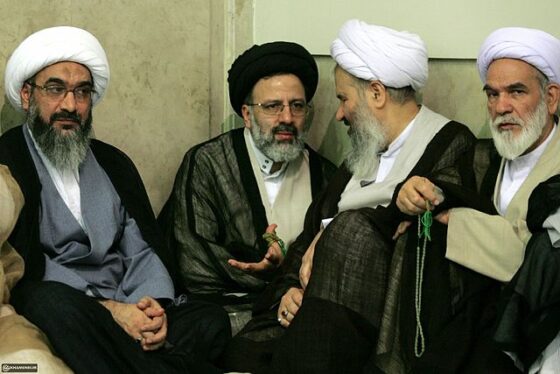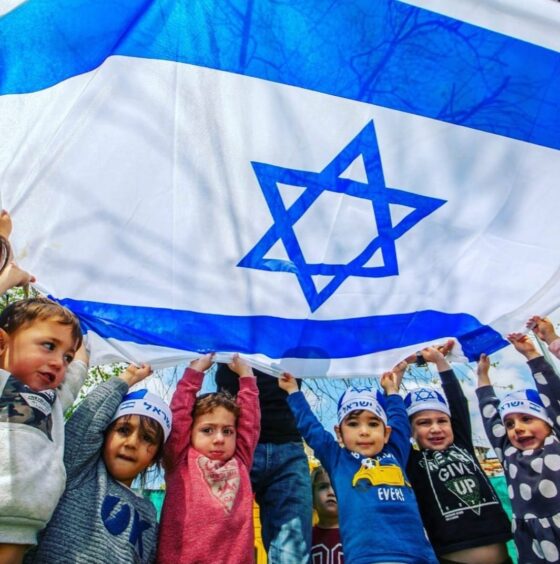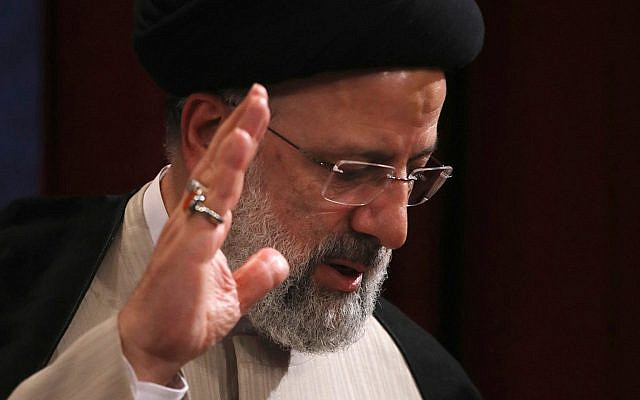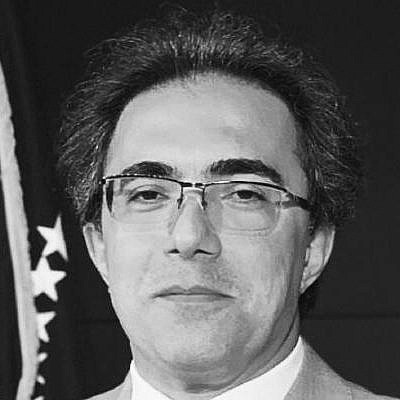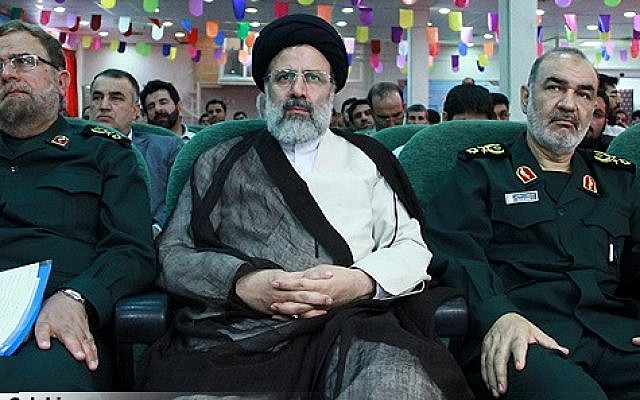SELLING THE REVOLUTION TO IRAN’S NEXT GENERATION
Published on: 2020-09-11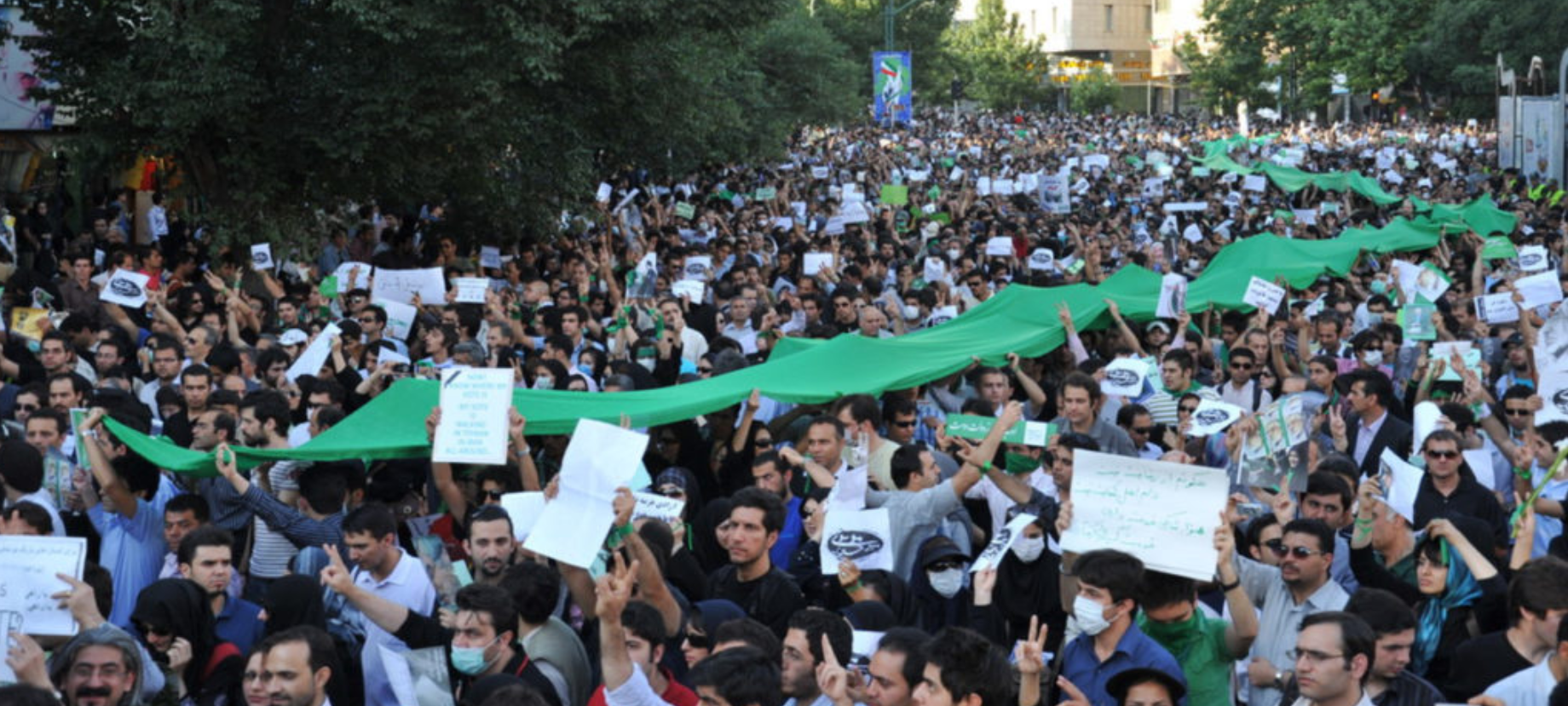
BY: SUZANNE MALONEY
Editor’s Note: This is an excerpt from “Book Review Roundtable: Iran Reframed”
In June 2013, Ayatollah Ali Khamenei, the Supreme Leader who has ruled the Islamic Republic of Iran since 1989, deviated from the usual script in remarks exhorting Iranians to cast ballots in upcoming presidential elections. After the standard diatribe against “global arrogant powers,” praise for the boisterous election campaign, and appeal for high turnout to “frustrate the enemy,” Khamenei ventured an unprecedented olive branch: “It is possible that some people do not want to support the Islamic Republic for any reason, but in any way they would like to support their country. Therefore, these people should go to ballot boxes as well.”
Khamenei’s unusual appeal to the opponents of the ruling system reflected the exigencies of the moment. He was beating the drum for the first presidential ballot since the Green Revolution four years earlier, when the improbable reelection of hardliner Mahmoud Ahmadinejad brought millions to the streets in protests that shook the post-revolutionary system to its core. Khamenei’s outreach prior to the 2013 election highlighted one of the central factors in the Islamic Republic’s durability: relentless efforts to inculcate support for the revolutionary state among its own citizenry.
The post-revolutionary regime has been intensely contested since its inception 40 years ago, when a diverse coalition ousted the monarchy despite little consensus around what should follow. That legacy and the intrinsic frictions within the polity, forged through the revolution and the transition to a new order, have sustained a commitment to mobilization and persuasion. Make no mistake: The Islamic Republic is an authoritarian state with little tolerance for dissent. Still, its legitimacy rests upon some foundational claim to popular support, and its leadership has invested heavily in a multifaceted set of instruments and initiatives to stoke internal support — even and especially where that support might be waning.
Despite considerable literature about post-revolutionary Iran, including work exploring more than 40 years of attempts to export the revolution to its neighbors, Tehran’s continuous efforts to market the regime to its own citizens command disproportionately little attention beyond cursory media coverage of the routine passion plays that pass for pro-regime rallies. Iran Reframed: Anxieties of Power in the Islamic Republic, a new book by Johns Hopkins University professor Narges Bajoghli, offers a glimpse of this important aspect of the Islamic Republic’s remarkable durability.
Iran Reframed is a slender book and, mercifully — given its origins in a doctoral dissertation — a narrative rather than a treatise. Bajoghli follows three pseudonymous “regime cultural producers” active in Iran’s booming film industry: Mr. Hosseini, Mr. Ahmadi, and Mostafa, whom the author met during years of field research in Iran. Each man is caught in a version of the same dilemma: How to produce films that reinforce loyalty to the revolutionary system for audiences whose political priorities, cultural references, and media habits have been radically transformed by 40 years of rule by the Islamic Republic. Ultimately, their mission entails reimagining the revolution and reviving its popular legitimacy without running afoul of the ideological strictures and personality politics that demarcate Iran’s power structure. In other words, they are fighting a losing battle, which the book’s protagonists appreciate as keenly as any reader will.
The Origins of Iran’s Film Industry
It should come as no surprise that Iran’s post-revolutionary leaders have invested heavily in cultural programming. The 1979 revolution succeeded at least in part due to the old-school connectivity, including smuggled cassette tapes of his sermons and mimeographed messages, that enabled Ayatollah Ruhollah Khomeini to coordinate strategy with opposition leaders and convey his messages to the public despite his exile by the shah. The power struggle within the revolutionary coalition that followed the shah’s ouster further incentivized a “massive propaganda program to claim the Revolution exclusively” for Islamism through public art, books and newspapers, radio and television, and other media.
In the post-revolutionary battle for hearts and minds, it was hardly obvious that cinema would feature prominently. Because films offer such a powerful vehicle for molding political consciousness, especially in a society where many lacked literacy, their place in pre-revolutionary Iran was constrained by religious objections and political censorship (at various stages, productions of Shakespeare’s Macbeth and Hamlet were blocked by the shah’s government because they depicted a king’s murder). Although there is a long, proud, indigenous tradition of Iranian filmmaking, imported films and cheap local imitations dominated the cinemas during the pre-revolutionary era. As American movie stars “became household names,” cinema came under attack as a vehicle of cultural “Westoxification.” On the night of dissident philosopher Ali Shariati’s death, protestors gathered in Shiraz and smashed the windows of the city’s Capri Cinema, which had been showing Spartacus.
Eventually, 180 movie theaters were set on fire during the revolution, including the infamous August 1978 arson at Cinema Rex, which killed 400 and amplified the opposition to the monarchy after rumors erroneously attributed the attack to the shah’s secret police. The intense polarization also eroded the human capital from the pre-revolutionary media industry, as many journalists, actors, filmmakers, and artists fled their homeland.
In such an atmosphere, a less-enterprising leadership might have retreated into essentialism by implementing the instincts of the traditional clergy, who branded cinema as sinful and prohibited. Instead, Khomeini’s ambitions for severing Western influences and reconfiguring Iranian society around his interpretation of Islam persuaded him to legitimize an indigenous Iranian film industry as “an instrument for ‘educating the people’ … like all art, it was to ‘be put in the service of Islam.’” The theaters still standing after the revolution were expropriated by one of the new state’s powerful semi-governmental foundations. As then-president Ali Akbar Hashemi-Rafsanjani later advised Iranian film directors, “If you … make good films, there will be no need for pulpits.”
The new government’s embrace of cinema stemmed from its rejection of external influence. Its leaders wanted a monopoly over the cultural influences to which its population was exposed. And they understood that without domestic sources of entertainment and information, Iranians might become dependent on foreign media. New technology, such as video cassettes, already posed a challenge. Documents seized at the U.S. Embassy in Tehran persuaded Iran’s leaders that private video circulation was intended to undermine the revolutionary state. Foreign videos and films were banned, and satellite dishes would follow.
As a result, the revolution begat a new cinema industry that bore little resemblance to its antecedents. After the new leadership purged universities and other institutions of liberal and Western influences, Iran’s post-revolutionary film industry took off during the 1980s, thanks in part to a then-unknown culture minister, Mohammad Khatami. The government established training programs for filmmakers and subsidized their productions. By 1989, Iran’s output of films ranked 9th in the world. Naturally, these perks came with strings, in the form of intrusive but ambiguous government censorship and control over the material requirements of film production. The successful rebirth of the industry only reinforced official resistance to external sources of entertainment. Revenues in the massive black market for Western videos reportedly dwarfed those of Iran’s new film industry during the 1980s.
Many films produced during the revolution’s first decade focused on the war with Iraq. The need to sustain support for the long, bloody conflict added urgency to the Islamic Republic’s resuscitation of cinema and presented an opportunity to further fuse Iranian nationalism with a sense of religious obligation. “Within the first few months of war, a production of persuasion began, and everything from print to celluloid was used to illustrate the beauty of sacrifice.” This was propaganda with a purpose —one element of a larger official “war culture industry” that encompassed everything from postage stamps to street murals, poetry, and music.
Film became an important vehicle for sustaining revolutionary fervor and maintaining high levels of recruits for the front. As Morteza Avini, Iran’s most acclaimed director of war documentaries, explained, the narrative of an overwhelming, existential threat was essential for instilling the required determination in the nation and its soldiers. War cinema helped reinforce a sense of solidarity under siege from the outside world, glorify martyrdom, and legitimize the expansion of state authority. Over time, a variety of government institutions, directly controlled by the Islamic Revolutionary Guards Corps, emerged to spearhead continuous production for the war culture industry.
“Bring the Arts and Media Back in Line”
The war’s end, via a 1988 ceasefire that left neither side satisfied, did not end the official embrace of war culture. Iranian leaders appreciated the utility of preserving the war “as a living memory” and a tool to shape Iranian identity. They also resisted Khatami’s hesitant attempts at relaxing state restrictions on filmmakers and other artists, sparking his 1992 resignation in a letter that warned of an “unhealthy and tumultuous environment” facing the culture ministry’s work.
Iranian cinema, and the broader cultural sphere, experienced a turbulent ride after the war, as economic pressures and political changes buffeted both the state and the industry. Even as Tehran began to relax tensions with its neighbors and liberalize foreign investment and trade, Iran’s leaders sought to bolster the revolution’s “traditional” values by doubling down on the motifs and messaging that had animated the early war films.
Debates over the film that prompted Khatami’s resignation, Time to Love directed by Mohsen Makhmalbaf, accelerated the intellectual ferment that eventually culminated in the reform movement. That movement, buoyed by Iran’s post-revolutionary baby boom, catapulted Khatami to the presidency in 1997 and generated a burst of new cultural production and media during his eight years in office. Makhmalbaf and other filmmakers openly backed Khatami’s dark horse candidacy, and a campaign video by director Saifollah Dad not only helped him upset the front-runner but also launched a new genre of election films.
The arts played a crucial role in defining the politics in the evolving revolutionary order, and during the reformist era, films pushed the boundaries of permissible social and political commentary. The war remained a potent theme, but the relaxation of the political atmosphere and the distance of time empowered a more jaundiced tone, with movies like Azhans-e Shishehi (“The Glass Agency”), which tapped into anger over the post-war treatment of veterans. However, despite signs of liberalization, Khatami’s presidency proved less successful at enacting meaningful changes to the power structure or improving Iran’s economy. The backlash to his modest opening targeted independent cultural activity and critical media. The judiciary, which is controlled by Iran’s supreme leader, shuttered hundreds of publications, banned movies that challenged the ideological claims of the revolution, and imprisoned filmmakers, journalists, and other artists.
Had Khatami and his allies achieved durable reforms to Iran’s ruling system, the state’s propagation of an official narrative steeped in war and religiosity might have receded as a defining feature of contemporary Iran. Meaningful political liberalization as envisioned by the most ambitious reformists would not have produced an unfettered democracy in Iran, but any abatement in the Islamic Republic’s authoritarian strictures would have expanded the space for contesting and reinterpreting the revolution and its aftermath. Instead, the system’s domination precluded its gradual amelioration, and the top-down limits on expression and dissent steadily widened the gap between the regime and society.
Khatami’s neoconservative successor, Mahmoud Ahmadinejad, handed the Ministry of Culture and Islamic Guidance to a former Revolutionary Guard commander who sought “to bring the arts and the media back in line with a strict revolutionary interpretation of the laws of Islam.” Upon taking office, Ahmadinejad banned films promoting feminism, liberalism, or imperialism as well as those endorsing anti-religious or unethical activity, violence, and use of drugs or alcohol. He championed the values of the “sacred defense” and “basiji culture,” a reference to the regime’s popular mobilization corps that signifies self-sacrifice in service of Islam. Censorship of books, newspaper, theater, music, and movies intensified, and the construction of a national “halal” internet began.
Ahmadinejad’s attempt at cultural retrenchment was only one element of his ambitious agenda. He sought to assert Iran’s power across the region and stoked nationalist sentiments on behalf of the contested nuclear program. He undertook heavy-handed, populist socio-economic policies that fueled inflation and squandered an unprecedented influx of oil revenues. His chaotic approach to governance seemed deliberately provocative, and he alienated both ideological poles within the political establishment.
As a result, his 2009 reelection campaign assumed historic consequence, sparking protests by millions of Iranians who rejected Ahmadinejad’s dubious victory and demanded “where is my vote?” Those protests, which became known as the Green Revolution, had an important cinematic dimension, as video feeds and other visuals from the demonstrations mobilized domestic support and international sympathy. The image of Neda Agha Soltan, whose killing by security forces was captured on video, became a catalyzing force for opposition to the Islamic Republic. Iranian filmmakers mounted one of the earliest expressions of solidarity with the protestors. Five days after the election, as unrest intensified, 120 documentary producers issued a statement decrying the dishonesty of state broadcasters’ coverage of the crisis.
More Questions Than Answers
Bajoghli’s analysis in Iran Reframed begins with these challenges — the Islamic Republic’s cultivation of a vast bureaucracy to propagate war culture as a means of reinvigorating support for the regime after the 2009 upheaval. The book approaches this question by chronicling the first-hand experiences of three men within the official machinery of cultural production, depicting their struggles to navigate the competing pressures of youth alienation and official ideological mandates in the Islamic Republic. Bajoghli illuminates the Islamic Republic’s capacity to fashion and communicate a compelling national narrative that reflects evolving political conditions and social norms.
The decades of resources invested in this project created the context for mass mourning that materialized in the wake of the January 2020 U.S. strike that killed Qassem Soleimani, commander of the Revolutionary Guards’ Qods Force. Whatever proportion of the millions who jammed the streets for memorial services were expressing sincere dismay over Soleimani’s death, their veneration of the man was the intentional outgrowth of the propagation of war culture, primarily by the various cultural arms of the security bureaucracy that Iran Reframed chronicles.
There are many aspects of this book to admire. Bajoghli does a wonderful job of weaving snippets of background material around her sketches of the pro-regime media producers. The book is rich with the texture of Iranian life, especially as seen through the eyes of a visiting researcher: the challenge of navigating Iran’s official interpretation of Islamic dress in the extremes of Tehran weather, the utility of a car ride for bridging the legal and social distinctions between private and public space, and the fault lines of class and generation that splinter even an ostensibly ideologically coherent segment of the political establishment. Especially compelling are the narrative details surrounding the challenges the producers face as they try to pitch propaganda without the audience catching on. One filmmaker shrouds an exile interviewee in a magneh to cover her tattooed arms, while organizers of small-town film festivals struggle to find music to entertain the waiting audience that is sufficiently appealing, both because of the regime’s ban on popular music as well as the need to avoid diverting the assembled crowds from the main attraction.
The main characters are depicted in a sympathetic light — by turns self-deprecating and disarming, struggling with the disconnect between their personal aspirations and the stentorian official dictates imposed upon them from above. Bajoghli notes in the book’s introduction that her experience meeting members of Iran’s Revolutionary Guard Corps as well as basijis (members of the internal mobilization force) persuaded her that they are “grossly misrepresented and misunderstood,” and the text tends to channel their interpretation of history, rather than challenge or interrogate those conclusions.
However, Bajoghli’s determination to humanize and, by extension, vindicate the individuals she profiles eclipses any effort to draw wider analytical conclusions from the research. The book concludes without exploring the obvious implications of Tehran’s semi-successful propagandizing. Perhaps most importantly — is it enough? At a time when the Islamic Republic is facing epic pressures from within and without, can the regime’s cultural programming and revamping of war culture themes sustain sufficient popular legitimacy for the Islamic Republic to endure? Bajoghli does not venture into this debate.
In this sense, Iran Reframed is limited by the narrowness of its aperture. The book barely skims through most of the past 40 years of political battles over cultural policies. There is only glancing discussion of media other than film or the broader bureaucracy established to undertake the inculcation of the Islamic Republic’s ideological narrative at home and abroad. The book doesn’t adequately situate the official investment in modernizing war culture within the broader context that includes a wink-and-nod at more permissive cultural production, including the Turkish soap operas which have been widely available via satellite channels as a kind of safety valve tolerated by the leadership.
The most gaping omission is that of the audience. Bajoghli notes that “Iran’s regime filmmakers imagine their audiences, mainly the youth they wish to target, as abstractions,” but that is precisely how the book treats them as well. The reader is offered a front-row seat for the individual ruminations and intra-group deliberations among regime filmmakers, but the book provides only the most cursory suggestion of how the media these men produce is consumed within society. A more thorough research project would have balanced the personal perspectives of the men who are adapting the war culture to contemporary realities with more reporting on the responses of young Iranians, including those who went to the streets repeatedly over the course of recent years to denounce the Islamic Republic.
The persistence of these protests, including the backlash that erupted in January 2020 only days after the epic Soleimani ceremonies over the government’s accidental downing of a civilian jetliner, suggests that receptivity to official narratives may be more superficial and less durably resonant than initial impressions may indicate. In fact, the work of regime cultural producers generates a variety of reactions. For some, “the state’s discourse, of the strong mourning women and the heroic martyrs” has been counterbalanced by “the secular discourse, which is to evade, to ignore, to escape to the Caspian.” Among others, the omnipresent themes of threat and martyrdom contribute to depreshen (depression) among otherwise healthy young people — the sense of “individual or collective grief, dysphoria, anxiety, melancholy, situational depression, clinical depression and/or what psychologists call ‘learned helplessness.’” And perhaps most dangerously for the Islamic Republic, the official narratives are also often deployed to advance a very different agenda: one of dissent. For example, music penned to commemorate the sacrifices of the war has been overlaid on videos associated with the Green Revolution.
Has the vast investment in cultural production, updated and attuned to contemporary culture, allowed the Islamic Republic to fashion a kind of nationalist attachment to the theocratic state? Or is the success offset by the undercurrent of frustration and misery that has infected the post-revolutionary political culture? The vignettes that comprise Iran Reframed are fascinating and illuminating and make the book worthy of an afternoon’s read. But they leave more questions than answers about Iranian politics and society today.
Suzanne Maloney is the vice president and director of foreign policy at the Brookings Institution. She has advised Democratic and Republican administrations on Iran and the broader Middle East. She has published three books and numerous articles and holds a Ph.D. from the Fletcher School of Law and Diplomacy at Tufts University.
